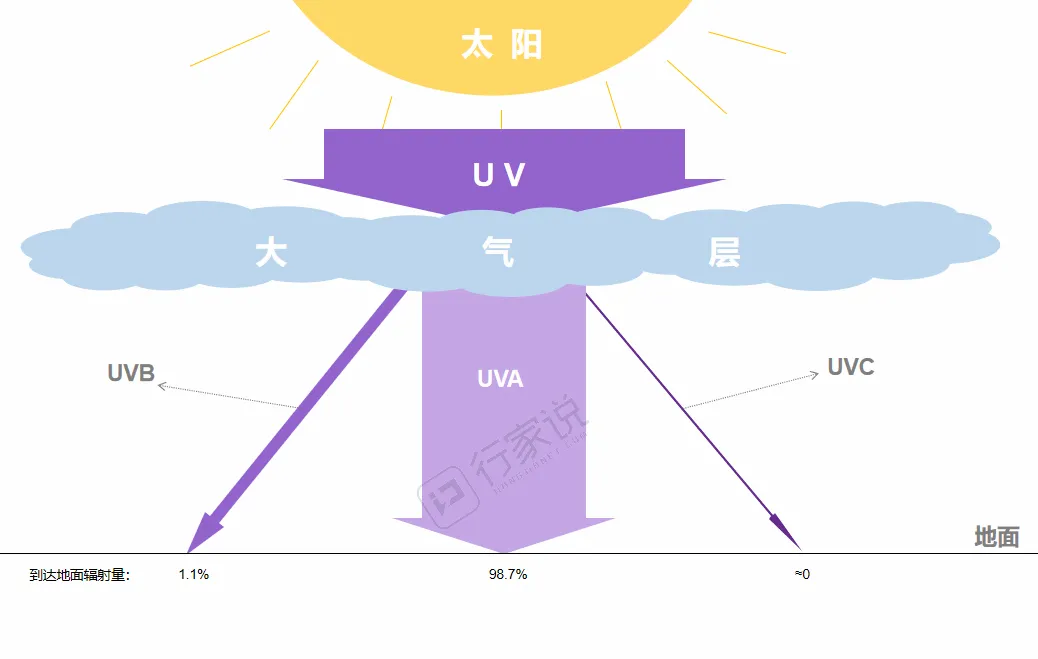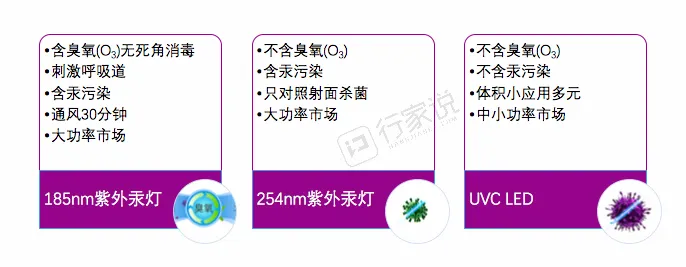The Demand For Uv Products Has Exploded, How To Make A Correct Science Popularization For Consumers?
2021-04-16 17:41:19
Due to the global spread of the new crown virus, ultraviolet products with sterilization and disinfection effects have been sought after by people, and the demand has greatly increased. On-site manufacturers have increased production, and off-site players are eager to enter the market. However, behind this ultraviolet carnival, there are some problems that cannot be ignored: ordinary consumers have a deep understanding of ultraviolet products and confuse mercury lamps with UV LEDs; at the same time, due to insufficient knowledge, if consumers use improperly, they may The body causes a certain amount of harm; some unscrupulous manufacturers use UVA, UVB or even ordinary white light to impersonate UVC, bully consumers, and so on.
If these problems are not resolved, on the one hand, consumers will lose their trust in UV products. On the other hand, it will disrupt the normal order of industry competition, leading to bad money driving out good money. At present, the road to popularization and publicity of ultraviolet products is still heavy. How to correctly understand UV products and UV LEDs, we will now make an easy-to-understand science for consumers.
The scientific definition and wavelength division of UV
UV (ultraviolet), that is, ultraviolet rays, ultraviolet rays refer to the general term for radiation with wavelengths from 100nm to 400nm in the electromagnetic spectrum. Ultraviolet light literally means "beyond purple". Because violet light has the shortest wavelength in visible light, ultraviolet light has a shorter wavelength than violet light and is invisible to the naked eye.
According to the difference of UV energy, it is divided into three commonly used waveband types:
UVA: also known as long-wave ultraviolet, with a wavelength of 320-400nm, the strongest ability to penetrate the atmosphere, the least destructive, and the accumulation of time can cause damage to organisms.
UVB: also known as medium-wave ultraviolet, with a wavelength of 280-320nm, will be absorbed by the ozone layer in a large amount, and will have a profound impact on the growth and health of organisms.
UVC: also known as short-wave ultraviolet, with a wavelength of 200-280nm, has the worst penetration into the atmosphere, and is the most destructive to organisms. Short-term exposure can burn the skin, and long-term or high-intensity exposure can cause skin cancer.
According to photon theory, the shorter the wavelength, the stronger the energy, and the more destructive it is to living things. Short-wave ultraviolet light even has super destructive power, can cut the chemical chain of most compounds, and can also destroy the RNA and DNA of cells, causing them to immediately die or lose their ability to reproduce.
The spectrum emitted by the sun to the earth originally contained the UV band, but due to the absorption of the earth's atmosphere, especially the ozone layer, which blocked 97-99% of ultraviolet radiation, most of the UV could not enter the earth's biosphere, and everything could live and multiply.

Note: 200nm to 100nm is the UVD band, which can only be propagated in vacuum, not in the scope of industrial research.
Mercury lamp and UV LED
UV is a double-edged sword. While its physical properties make it destructive to living things, it can also produce many practical uses, which makes the artificial acquisition of UV have commercial value. At present, humans use industrial technology to obtain UV mainly through mercury lamps and UV LEDs.
Mercury lamp: The energy difference between the excited electron state and the ground state of mercury atoms just falls in the ultraviolet range. The cathode ray tube emits high-energy electrons to make the mercury vapor atoms in an excited state, and the excited electrons return to the ground state to emit ultraviolet rays.
UV LED: Use the principle of semiconductor luminescence to produce light sources in the UV band. The band gap of the third and fifth group semiconductor materials such as aluminum nitride, gallium nitride or indium gallium nitride falls between the blue and ultraviolet wavelengths, and their electrons and valence bands The holes on the compound are recombined, and the energy obtained during recombination is released. By changing the material ratio, different wavelengths of ultraviolet and visible light can be released.
Comparison of the advantages of UVC LED and mercury lamp
Currently, there are two main types of ultraviolet light sources used for sterilization: traditional mercury lamps and UVC LEDs; high-power mercury lamps dominate the mainstream; UVC LEDs are currently only suitable for home appliances, civil water treatment and low-power markets for surface germicidal lamps.
The corresponding disinfection area of mercury lamp is generally 1W corresponding to 1㎡; according to the wavelength, it is mainly divided into: ozone type 185nm and ozone-free type 254nm; the former has no dead angle disinfection, which is more suitable for factories, workshops, hospitals and other places; the latter only works on the irradiation surface , More suitable for home and restaurant lighting places.
In the long run, UVC LEDs do not contain mercury pollution and are small in size, making them the only alternative to UV mercury lamps, and high hopes are placed on them.

It should be pointed out that, compared with mercury lamps, UV LEDs need continuous breakthroughs in technology, efficiency, and cost. For example, when the radiation efficiency reaches more than 10% to 20%, and the cost is comparable to that of ultraviolet mercury lamps, it will be more important. Opportunities to truly launch large-scale applications in household, commercial and even industrial fields.
Application areas of UV LED
In recent years, UV LEDs have been widely used and can bring new experiences to people's lives and make their market development potential huge, which has been highly anticipated by the industry and the public. Each UV wavelength type has a specific application. Currently, UVA products are the most widely used. The threshold for UVB and UVC is higher, especially UVC.
UVA (320~400nm): UVA is generally harmless and can be used to treat certain skin diseases. UVA LEDs are mostly used in UV curing, anti-counterfeiting detection, photocatalysis, skin tanning, etc.
UVB (280~320nm): Most of the UVB in sunlight is absorbed by the atmospheric ozone layer. Long-term exposure may be harmful to human eyes and skin, but it is beneficial to the production of vitamin D and the treatment of serious skin diseases. UVB LEDs are mostly used in plants Growth and medical phototherapy.
UVC (200~280nm): Because it is extremely destructive, it has the ability to sterilize and disinfect. At present, UVC LEDs are mostly used for surface sterilization, air purification and water treatment.
It should be noted that everyone has a different degree of resistance to ultraviolet rays. When the cumulative amount of exposure reaches a certain limit, it will cause damage. UVA, UVB, and UVC can cause damage to the surface tissue of the eye. Therefore, when using ultraviolet products, avoid direct ultraviolet light on the human body. When designing products, the UV LED industry should also be very careful about safety design and safe use guidance.

